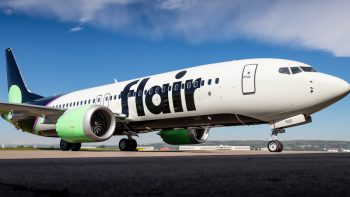
A leading airline experts says Ottawa may need to step in to preserve service to small and medium-sized Canadian cities.
Robert Kokonis, president of Toronto-based Air Trav Inc., told Open Jaw it wasn’t surprising Canada’s major airlines emphasized their core airports as the country emerged from the pandemic.
As reported in this space on 12AUG, the 30 biggest airports in Canada have seen passenger capacity return to 98% of 2019 levels on average. But the next 30 airports are barely at 70%, and Cirium data shows 23 Canadian airports have lost all service.
“Coming out of the pandemic, we knew airlines were going to first focus on rebuilding and expanding their core network airports, like Toronto, Montreal, Calgary and Vancouver, followed by larger non-hub airports like Edmonton, Winnipeg, Ottawa, and Halifax. And that is what the carriers have done,” Kokonis said in an email to Open Jaw.
“Complicating the landscape further for regional airports, we had WestJet pivot towards western Canada, which included the transfer to the west of any WestJet Encore 78-seat Q400 turboprop aircraft that had been based in the east. At the same time, Air Canada reduced the footprint of some AC Express flying in western Canada, for example from Regina and Saskatoon to Winnipeg, Edmonton and Calgary.”
For smaller communities, the elimination of sub-50 seat aircraft from the largest regional fleet in the country, Jazz Aviation, which operates as Air Canada, has also taken a toll, Kokonis said.
“Air Canada, like many airlines in the U.S. market, found the sub 50-seat turboprops uneconomical, particularly as costs such as fuel, and now labour, have risen. Even the days of the 50-seat regional jet operated by Jazz are likely limited. In the U.S., 50-seat jets have mostly disappeared, as have turboprops smaller than the 78 seat Q400.”
Kokonis said Canada’s low density, spread out geography makes the economics appreciably more difficult.
“Regionals are stepping up to fill some of the void, such as PAL Airlines, Calm Air and others. And as additional E195-E2 jets continue to arrive, Porter will keep looking for new route opportunities that could include regional centres.”
Kokonis said the longer-term solution needs more thought.
“Some people have suggested the need for a U.S.-style Essential Air Service (EAS) program in Canada, that uses government subsidies to backstop voids in regional service.
“Considering inter-city bus and rail service is close to non-existent between most Canadian communities, an EAS-style program at least warrants a closer look.
“There will be push back, though, as to whether taxpayers should be backstopping such a program, so time will tell.”
That being said, there’s no doubt connectivity is vital to Canada.
“Ultimately, Canada is a vast nation that needs accessible air service to ensure the efficient movement of people and goods from coast to coast to coast,” Kokonis said.






